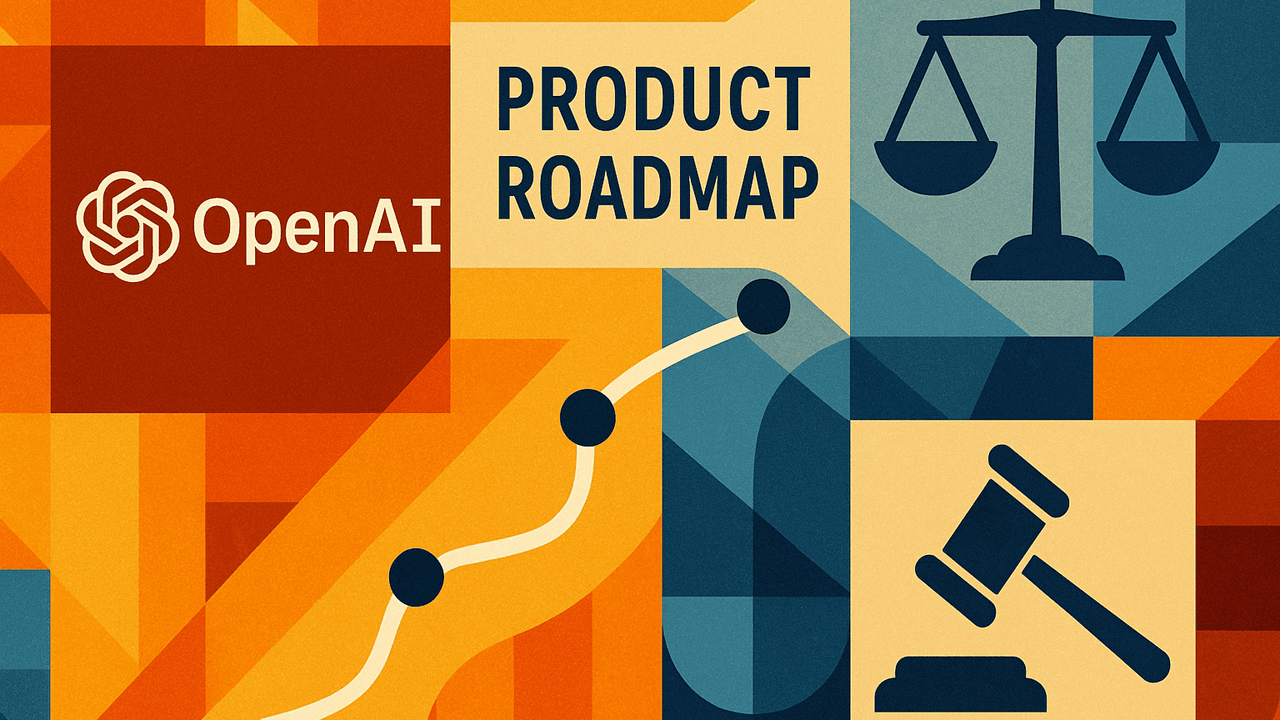What if Legal Innovators Knew OpenAI’s Product Roadmap?

One of the struggles legal innovators wrestle with is how to build specialized, vertical capabilities that complement the next big things, like GPT-5, rather than get overrun by them.
First movers in legal tech often win the day, but with Google, OpenAI, Meta, and other big players, it can feel like dancing with elephants. For example, innovators that focused on fine-tuning OpenAI’s GPT-3.5 Turbo learned tough lessons when GPT-4 and GPT-4o came out and were better than their fine-tuned models.
How can legal innovators anticipate more of these changes?
One surefire step is to focus on the data hygiene for proprietary data. Get your data right. Organize, define process, add metadata, and ensure quality. That should survive most any AI technology advancement.
Designing a more flexible system that allows new models to be easily inserted into solutions is another step. Anthropic’s Claude is preferred by many for summarization, but will that be the case in six months?
Comparisons to the American Industrial Revolution
AI is part of the fourth industrial revolution. We can learn from history, and the American Industrial Revolution can be a helpful guide. Railroads in the United States were the first “if you build it, they will come” capital investments. Investors placed their bets on railroads going to towns that had yet to be built, like Atlanta, Georgia.
In addition to the investment parallels, two observations jump out at me from this era. The first was limited regulation. During that time, there were far fewer rules.
The current administration is working to help the U.S. compete, lead, and win the AI race. Regulations are slow to develop, and others are being eased. AI is competing for energy to power even larger datacenters, and energy policy is changing to support that.
The second observation is that the businesses that competed the most aggressively and tried to operate at a massive scale were the big winners. Carnegie in steel and Rockefeller in oil are two great examples of tycoons who thought big, took action, and asked for forgiveness later. Other businesses were still successful, but they had to navigate around the big ones of the day.
Anticipating the future
In addition to using history as a guide, there are some ways to anticipate the future, too.
OpenAI just released GPT-5, and at least four legal tech players had early access. Those were Thomson Reuters, Harvey, Spellbook, and Legora.
Not all players have that luxury, but it doesn’t hurt to proactively ask your technology partners what is on their roadmaps. You might be surprised by what they will share.
With OpenAI, there has been speculation around GPT-5 for well over a year. Deep Research seems obvious in hindsight. But what other features might be likely on the roadmap from OpenAI or other providers?
Potential LLM Feature Enhancements
Here is a quick list of potential enhancements that legal innovators should consider in the coming 18-24 months.
Note: I have no inside knowledge, and I’m not sharing any confidential information. This is an educated guess on my part.
Multi-user interaction: What if ChatGPT were available in a Microsoft Teams chat and multiple people could interact with one instance of ChatGPT? Microsoft has hinted at this, and it is logical to expect shared conversations with LLMs.
Support of multiple personas: What if your LLM could take on different personas and play different roles? Already, OpenAI has introduced a teaching mode. Is it unrealistic to think there will be a medical professional who abides by and is guided by medical ethics? What about an attorney? The courts may have a say in whether an LLM can have privilege, but it would be technically feasible.
Regulatory aware: There are legal tech businesses like Norm.AI developing regulatory guardrails for AI. But what if the big players were aware that a user was in California and then applied California law to the output and interaction? That isn’t far-fetched, but there would need to be transparency and links to sources.
On-prem solutions: For all those firms concerned about privacy and wanting to control everything in their own environment, there are published reports and active discussions about models that can be installed behind a law firm's firewall. OpenAI made an announcement as I was finalizing this article! They won’t be as powerful as the latest GPT5 or GPT4 model, but they can be fine-tuned with confidential information.
These are just a few impactful enhancements. We are also seeing the tip of the iceberg with agents, and in my humble opinion, there hasn’t been enough talk about the power of OpenAI’s and Google’s deep research offerings.
Brainstorming and Scenario Planning
Legal Innovators should consider brainstorming sessions and scenario planning based upon potential feature enhancements that could come from the big AI players and other important vendors. If you have strong enough relationships, ask vendors for insight or offer to be a beta tester.
Another way is to use the power of LLMs to spar and brainstorm directly. Click on this link to see what I asked ChatGPT as I was writing this article.
Here is a closing thought. Gary Marcus, a leading AI expert, posted what was an April Fool’s Day joke in 2024 about an “option to run ChatGPT purely on licensed data, so artists and writers are fairly compensated.” Honestly, that’s not far-fetched if the economics could work. Don’t be surprised if some vendor offers that someday.
This article included input from AI.
